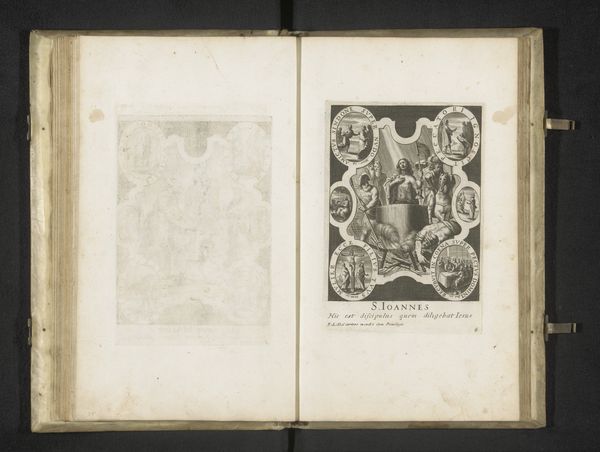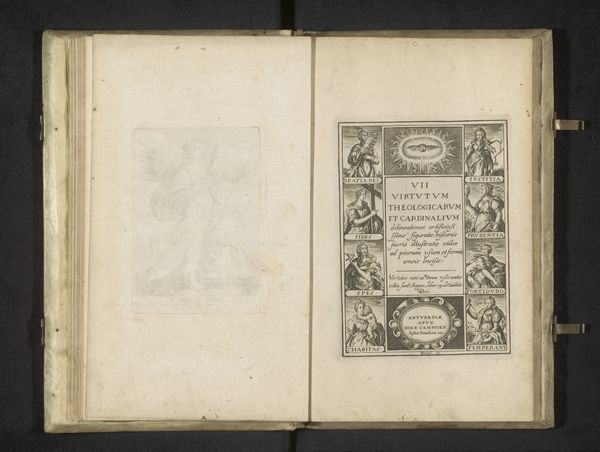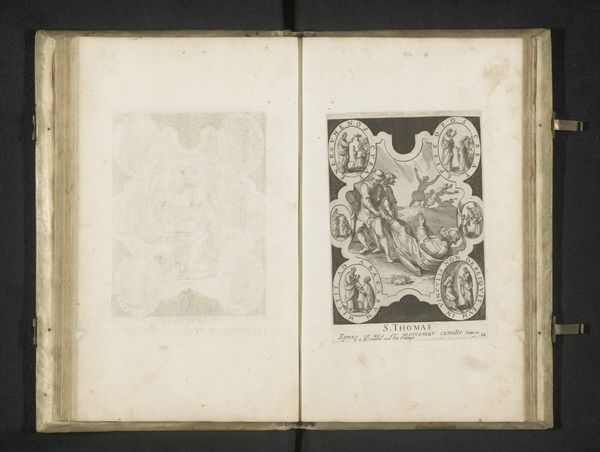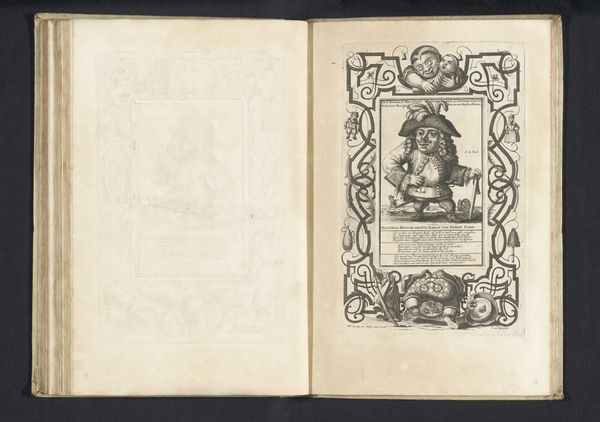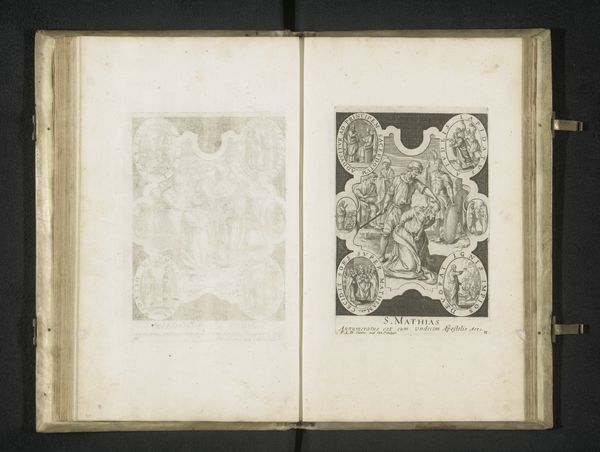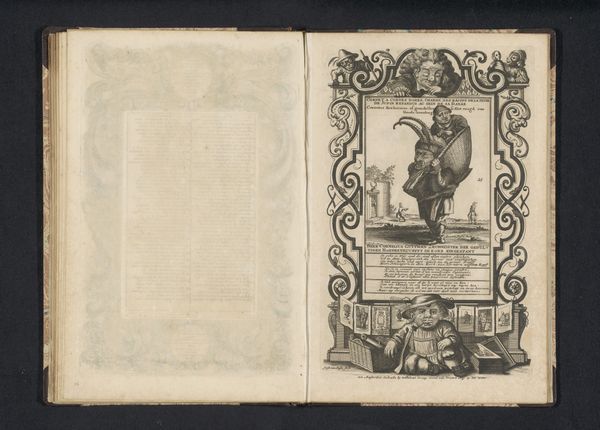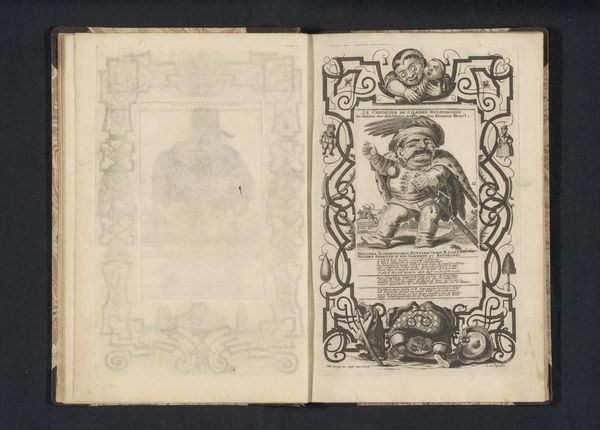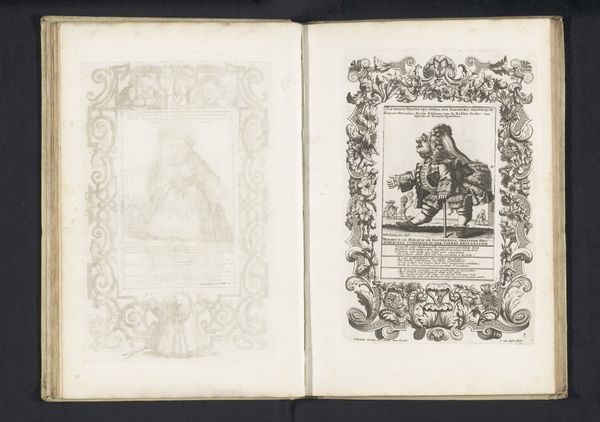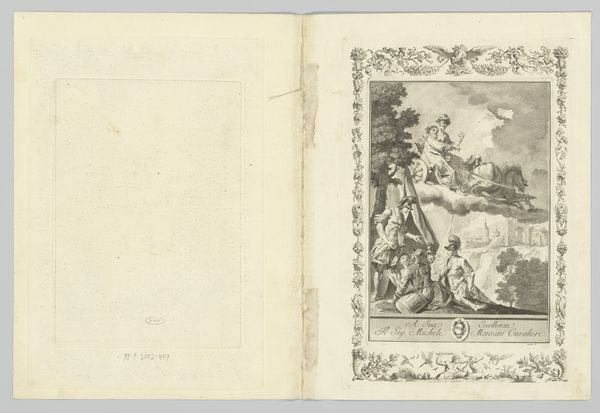
drawing, print, paper, engraving
#
drawing
#
allegory
#
baroque
# print
#
figuration
#
paper
#
engraving
Dimensions: height 182 mm, width 132 mm, height 298 mm, width 182 mm
Copyright: Rijks Museum: Open Domain
Curator: Welcome. Let’s consider these facing engravings by Isaac Briot entitled "Liefde" or "Love", likely completed between 1600 and 1670. Editor: Gosh, they’re like ornate Valentines! On the right, especially, the dark hatching practically vibrates with a sort of fervent, almost desperate energy, contrasting so strikingly with the delicate and rather serene figure on the left page. Curator: Indeed. On the right we see "Charitas" depicted as a mother surrounded by children, evoking Caritas Romana, a recurring Baroque motif highlighting selfless devotion and familial love. The tight composition channels emotional intensity through allegorical representation, embodying charity as an active virtue. Editor: That’s fascinating because she actually looks almost weighed down, as though she can barely support them all. The composition isn't just radiating devotion, it feels... burdensome. She's less an ethereal Madonna, more a harassed mum trying to stop everyone from tumbling into the ancient ruins in the background! Curator: This highlights the complex encoding common in Baroque allegories. Briot layers signifiers; the overgrown ruins may be interpreted as antiquity's crumbling wisdom or the challenges that familial bonds overcome, adding structural depth. Consider the botanical framework: a stark decorative contract highlighting the engravings as being part of a book. Editor: It certainly makes one think. It is this dynamic juxtaposition—love idealized against love realized with all the accompanying struggle. Looking again, I feel a real compassion, the Baroque really knew how to push human emotion. Curator: Yes, Briot uses classical imagery but disrupts a static representation using dynamic composition and an eye for human frailty. These images reveal something about what it meant to depict the idealized versions of virtues, not as static concepts, but within a network of social and interpersonal stresses. Editor: You are right to draw out that contrast and network, even. Looking closer makes these modest prints become, well, quite bold.
Comments
No comments
Be the first to comment and join the conversation on the ultimate creative platform.
